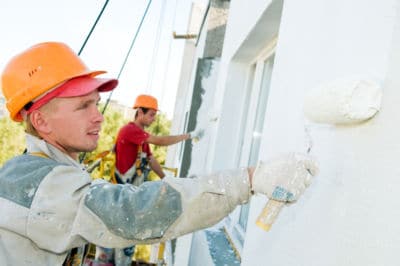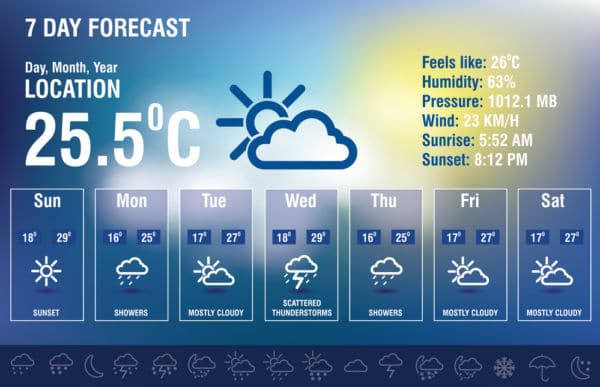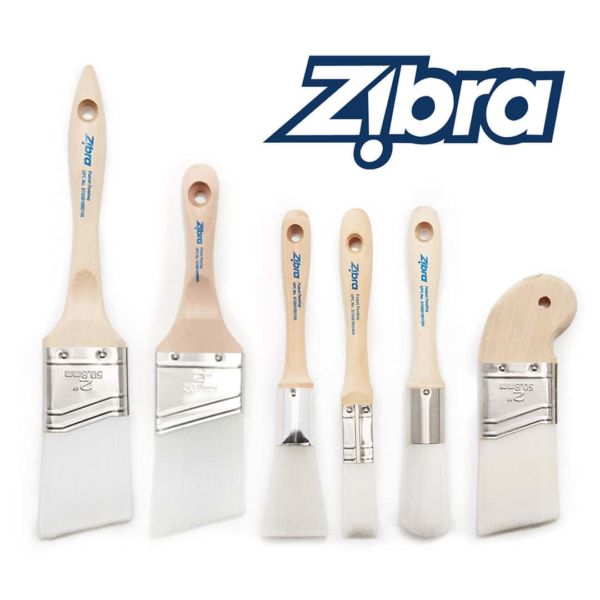 Painting in cold weather can often lead to unsatisfying results, so it’s important to understand the downsides. For example, painting at temperatures below 50°F can lead to surfaces drying improperly, sometimes with a cracking paint film. Cosmetically, painting in cold temperatures can also create issues with color uniformity and make touch-ups look far too obvious.
Painting in cold weather can often lead to unsatisfying results, so it’s important to understand the downsides. For example, painting at temperatures below 50°F can lead to surfaces drying improperly, sometimes with a cracking paint film. Cosmetically, painting in cold temperatures can also create issues with color uniformity and make touch-ups look far too obvious.
Likewise, cold weather painting sometimes proves problematic by spoiling the freshly painted surface’s stain resistance or causing problems with water spots. Using a paint that’s not temperature-reactive — such as Real Milk Paint — can help with many of these issues, though drying times will still be extended at lower temperatures.
Cold Weather Painting Tips
These cold weather painting tips can help you improve the look of your exterior painting. They provide the knowledge you need to properly prepare for exterior and interior painting when temperatures drop, whether you’re using house paint or other mediums.
Pay Attention to the Surface Temperature
When you’re painting in the cold, the surface temperature can make or break your project. Surface temperatures can vary greatly from ambient air temperature because some surfaces may retain cold or even remain frozen due to freeze-thaw cycles, even in direct sunlight.
Your friendly neighborhood painting contractor may use infrared thermometers to check for the minimum temperature, and if you plan on painting a lot, they’re inexpensive enough for hobbyists and home improvement enthusiasts alike. In fact, infrared thermometers may help you avoid poor paint project results, especially on high-visibility exterior portions of your home and one-of-a-kind items.
Watch the Sun and the Weather Forecast

When planning big exterior paint projects that require more than a day to complete, be sure to pay attention to the weather forecast for the next few days. Look for days with lots of sunshine and temperatures high enough to warm up the air as well as the surfaces you wish to paint.
Direct sunlight quickly raises the temperature of most building materials, and since the middle of the day is typically the warmest, it makes sense to plan projects for that time frame when painting in colder months.
Be aware, however, that the sun isn’t the only factor that matters when painting in cold weather — humidity, wind speed and wind direction also play a role in drying times and how well surfaces retain heat.
Create Enclosed Spaces for Exterior Painting
If you just need to paint a small surface area, you can always use a hair dryer to warm up the surface temperature, then dry it off to remove any residual moisture before starting your paint job. Larger jobs, however, typically prove more challenging.
To help raise the temperature around larger surfaces, especially after several freeze-thaw cycles, you can create an enclosed space for your work by building a frame with wood, poles or scaffolds, covering the frame with a 4- to 6-mil plastic sheet, then warming up the area with a space heater to between 70° and 80°. Keep in mind that for this technique to be effective, you must maintain that temperature until the surface dries.
Choose Paint That Handles Cold Weather
While you can use latex paints, oil-based paints and acrylic paints for interior and exterior painting at 50°F temperatures, that doesn’t mean your projects will dry quickly. This means that even when you think it’s warm enough to paint, poor drying times might put your project integrity at risk.
Fortunately, Real Milk Paint counters this issue since it has no suspenders or acrylics in the formulations — the ingredients in interior and exterior paints that typically react poorly to painting in cold weather. Drying times, of course, will vary, depending on both air temperature and humidity while doing interior or exterior painting.
If you plan on using Real Milk Paint with Ultra-Bond Adhesion Promoter, however, you do need a more temperature-controlled setting to achieve optimal results.
Prepare Paint Properly Before Beginning
Properly prepared paint fares much better when you’re painting in cold temperatures, making the extra steps worth the effort. First, stir the paint more thoroughly than usual, paying careful attention to the texture, thickness and color as you go.
Consider previously frozen paint usable so long as you can mix it out to a smooth consistency, but discard any previously frozen paint that doesn’t lose clumps, blotchiness or stringiness with a proper stirring.
Since Real Milk Paint is a water-based paint that contains no temperature-reactive ingredients, it typically mixes well after freezing so long as you use it within its usual 2-week shelf life after mixing. Also, our milk paint has a powdered formulation, so you can mix up just enough interior or exterior paint for your project..
Use Paintbrushes Crafted for Thick Paint
Painting properly in cold weather requires having the right tools, including using paintbrushes crafted for spreading thicker paint such as oil-based paint or latex paint. These brushes tend to have synthetic rather than natural filaments, so you need something like polyester or nylon bristles such as Zibra paintbrushes, which utilize a proprietary synthetic fiber blend.
If you plan on using the paintbrushes often, look for high-quality options with sturdy handles that easily weather colder temperatures and sturdy ferrules that keep bristles in place even with a higher drag across surfaces common with thicker paints.

Milk Painting in Cold Temperatures
While many paints, including latex paint and oil-based paint, work well in colder weather, milk paints have special properties that make them an ideal choice for interior and exterior painting in colder temperatures.
No acrylics or suspenders in the all-natural powdered formulation means Real Milk Paint doesn’t react the same way to cold weather as more processed paints, and the ability to mix just what you need saves product if temperatures drop further and you have to delay your project.
Additionally, Real Milk Paint is nontoxic and contains no volatile organic compounds (VOCs), allowing you to work with the colors inside an enclosed bubble of warmth without ventilation. A beautiful range of 57 colors ensures you have ample variety for most indoor and outdoor cold weather painting projects.
While painting in cold weather isn’t optimal for quality and comfort reasons, sometimes it’s unavoidable. Fortunately, Real Milk Paint helps you out with versatile colors and paintbrushes that help you complete essential interior and exterior projects year-round. Use these cold weather painting tips to help your creative endeavors turn out their very best.
For guidance on your paint project you can call us here: (800) 339-9748.



